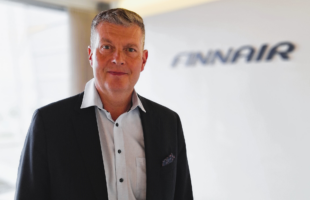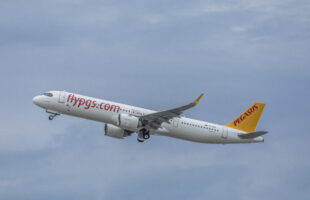Home markets
Finnair it turns out, has not just one, but two core markets although they describe them as the home market and the extended home market. The former is the four Nordic countries: Norway, Denmark, Sweden and themselves along with the three Baltic states of Estonia, Lithuania and Latvia. Of the former, which generates not quite a third of Finnair’s business, the big two are Finland and Norway which contribute over a tenth each of revenues with one particular product being a key driver – seafood from Norway.
There is no doubting the importance of seafood to Japan and similarly to Finnair’s four routes there. Salmon is farmed and prepared – ie. filleted in Northern Norway – and then trucked to Helsinki, direct to the airport, where it is loaded onto flights to Japan. The tagline for this industry is 34 hours from sea to sushi-plate – giving it a freshness Japan’s highly demanding consumers like and pay a premium for.
Norway led by its salmon farmers generate as much business as Finland in its entirety does. Fukuoka in Japan, a new Finnair destination, whose first monthly figures have been, to quote Tarvainen, “relatively successful” proves the point. The basic inbound market is seafood with outbound being basically general cargo and industrial goods.
There are though some minor weaknesses with the sushi route. One is SAS is a bit resentful at Finnair getting so much from its patch even though it has rather captured all the business of a similar type in the Southern part of Sweden and Norway. Th is can be combined with a well established fact the Nordic countries are small, mature markets and therefore unlikely to have growth spurts.
Th e other is it is flown from Helsinki, although Tarvainen is very much a realist. Not only is there an issue about the lack of a suitable airport where the salmon is cultivated, but it’s a one direction route, so it is not worth flying up there to collect it as there is nothing to deliver. “You should have payload in both directions,” he said. As for Finland as a market, well electronics and components figure large, but the days when Nokkia mobiles seemed to be on the verge of world domination and no aircraft could fly without carrying them, are simply over. “Nowadays its direction is different,” said Tarvainen adding Finnair still from “time to time gets good loads” carrying them although the spare parts and components trade is still there.
Finland also supplies some seafood, but its substantially different to the Norwegian one as part of it its King Crabs which have to carried live. Along with bees and living and very young chickens it’s the unusual side of what the carrier has moved.
Extended home market
Then there is what Finnair calls its extended home market of Brussels and London. These two locations are chosen because they are the buckles in different pharmaceutical manufacturing belts a market which is Finnair’s target and one it believes the quality of its service, helps it win. “We believe we are one of the most punctual, one of the best reliability products in Europe and the world, since we have the higher quality requirements of that product type we know that it will support the general cargo quality as well,” he said. It is also an attractive market, especially for an on the move carrier such as Finnair.
Pharmaceuticals as a market are growing and the yields are, as Tarvainen put it, “a little bit better.” Cooperation is key here. In Brussels Finnair does quite a bit of cooperation with Brussels airport, said Tarvainen and it works “quite heavily” with the product itself. What this means is liaising with the various stakeholders to tackle the issues that concern then. The example given by Tarvainen was keeping pharmaceuticals that need it within the cool chain and maintaining it well.
In London it does a fair bit of cooperation with not so much Heathrow as with IAG Cargo although there is a bit of a quirk here. “We have rented feeder freighter capacity” said Tarvainen. Finnair, having sold off its own maindeck freighter fl eet, now rents an A300-600 to shuttle cargo between London Heathrow and Helsinki. Th e deal was considered innovative at the time and allows Finnair to make London its third cargo hub after Helsinki and Brussels. It actually goes further than that.
Alliance with IAG
Th e creation of the new cargo bridge, which connect IAG Cargo’s network strength into the Americas and Finnair Cargo’s network into Asia was an important strategic move for Finnair. It opened up the potential of tens of new destinations in North America in addition to its current routes. More telling is what Steve Gunning the CEO of IAG Cargo added: “With Finnair’s excellent reach into Asia and our strength in the Americas, this deal will open up new markets for our customers while helping us to responsibly manage capacity on our network.” A strategic alliance like this with one of the giants of the air cargo industry is in a way a major achievement for Finnair previously a niche Nordic player now part of a global alliance.









